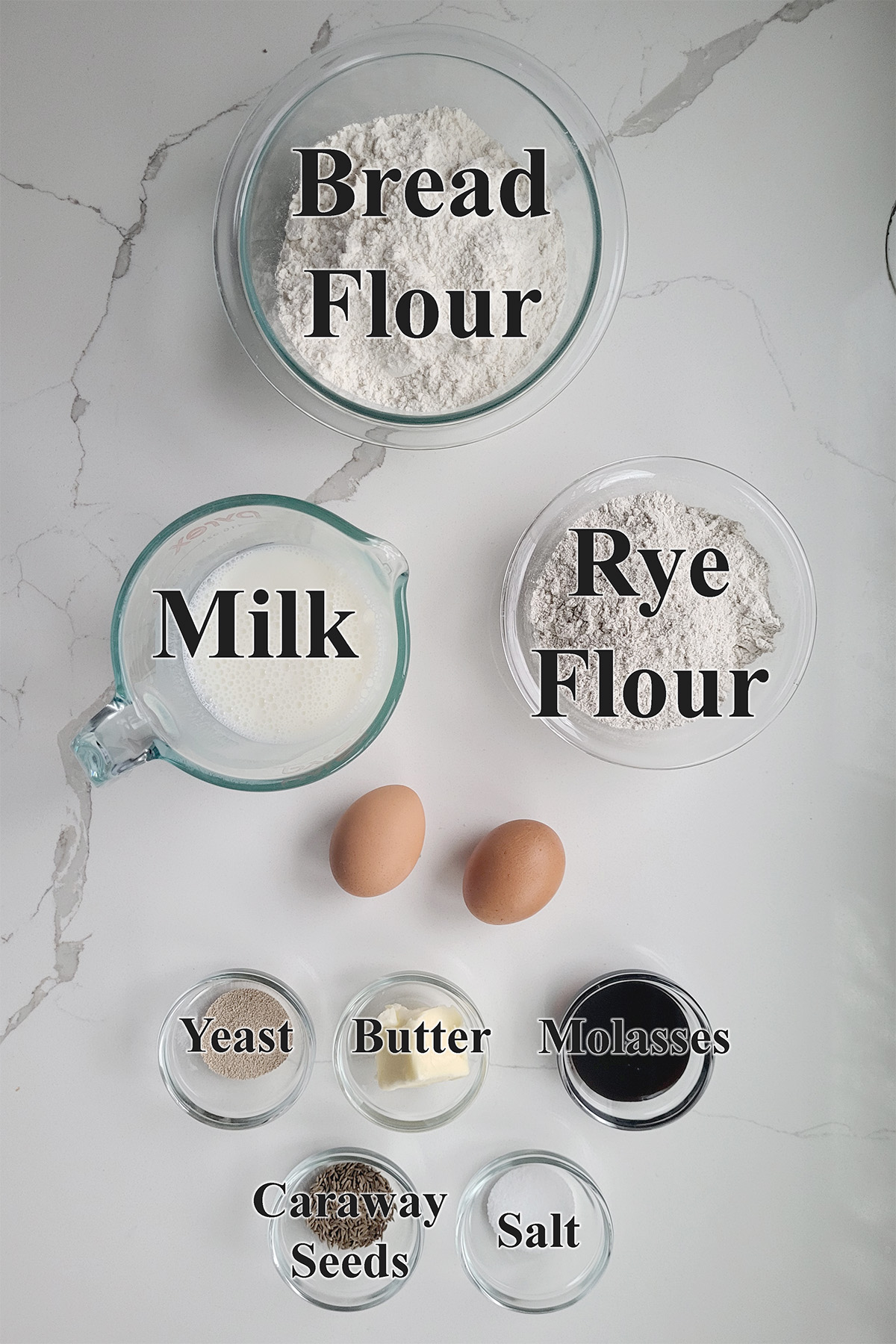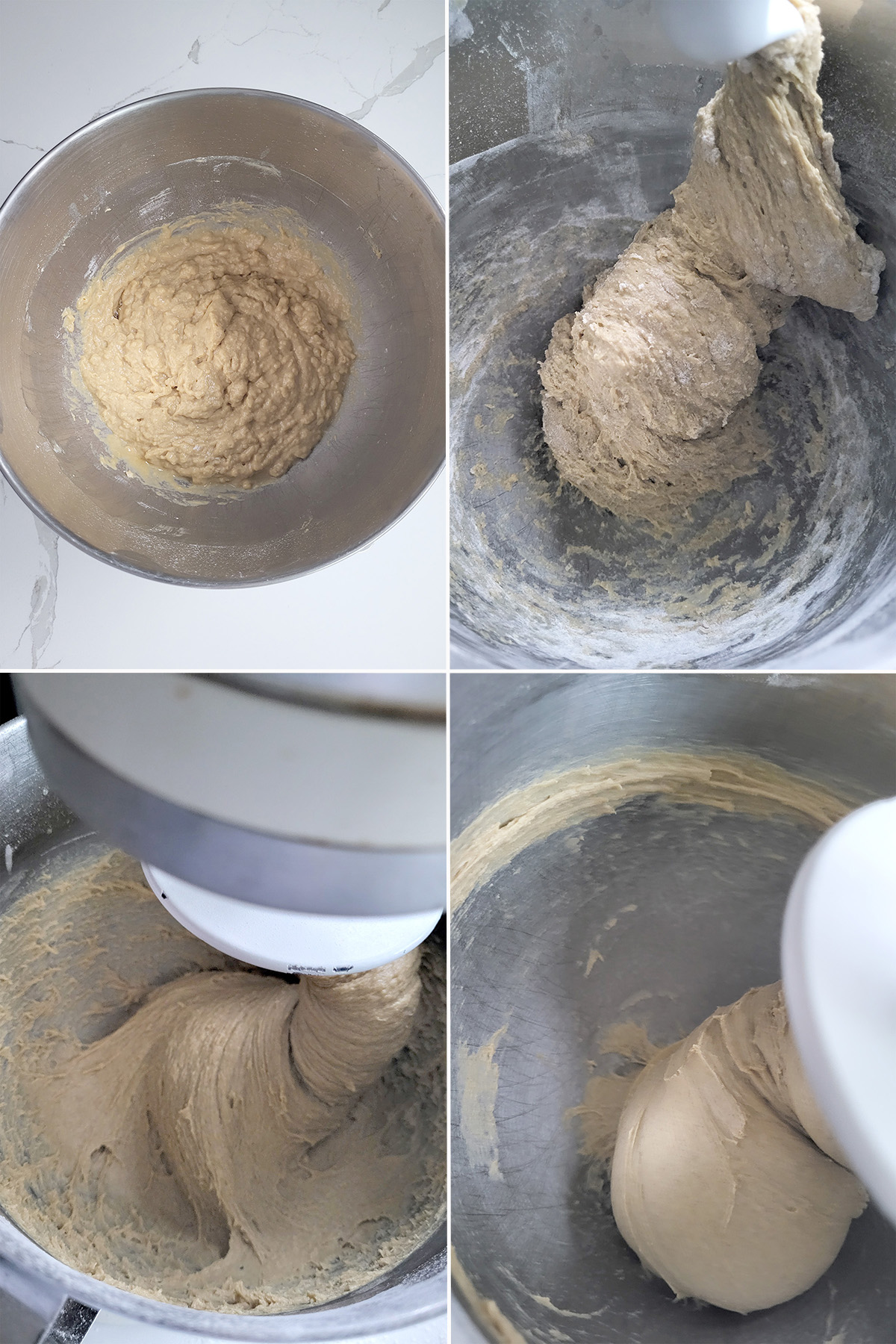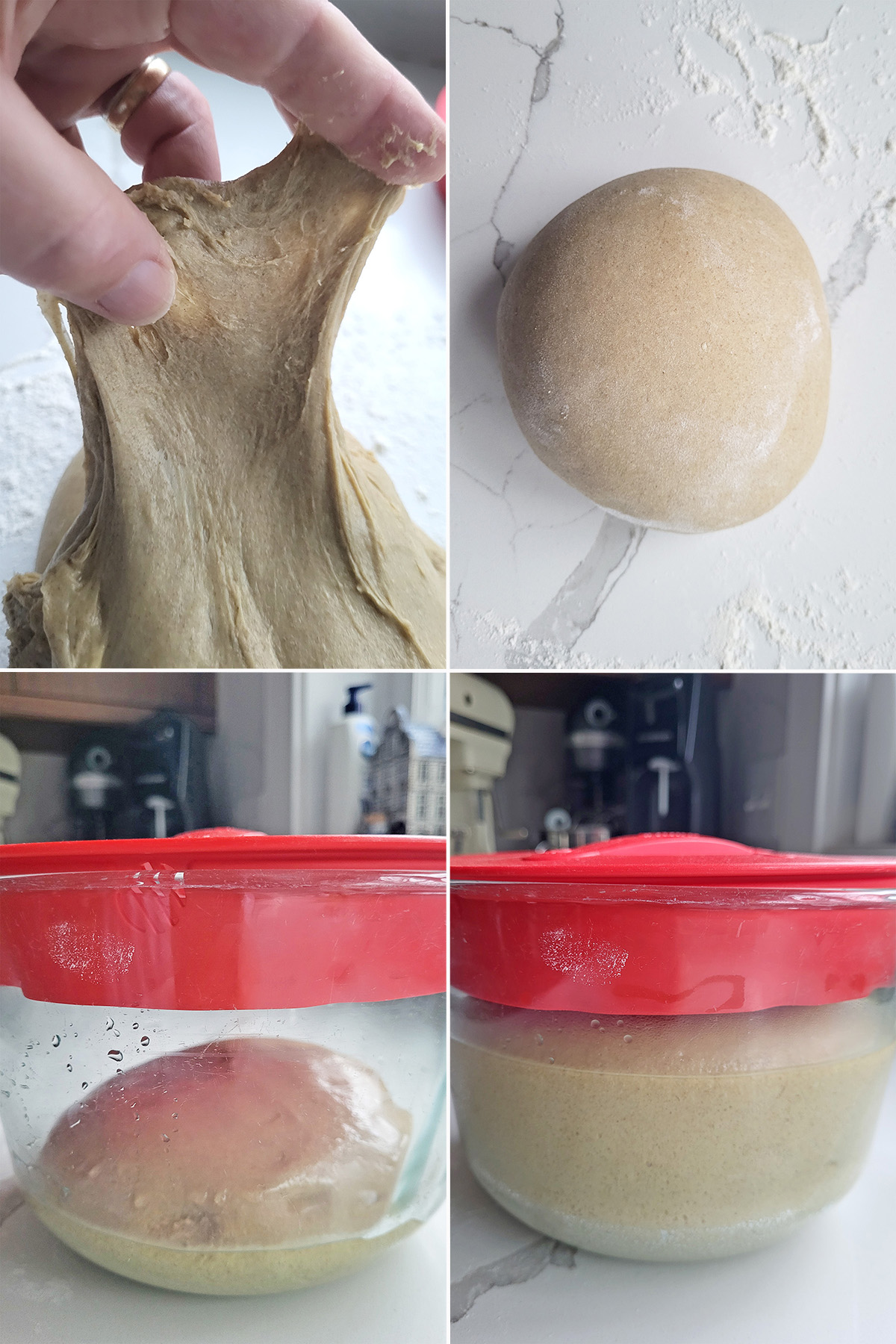Rye & Molasses Dinner Rolls
Rye & Molasses Dinner Rolls are soft, tender, and just a little sweet from the molasses. If you’re looking for a dinner roll with real personality, this is it.

Table of contents
Why you’ll love this recipe
This recipe is a riff on my very popular Buttermilk Dinner Rolls. I’m a big rye-flour fan, so I added a bit to deepen the flavor and give these rolls a rustic edge. Molasses brings gentle sweetness and a beautiful color, and the two ingredients work together to create a roll that’s both familiar and distinctive.
This is an enriched dough, made with milk, eggs, and butter, so the crumb stays soft and supple. If you’re curious about how enriched dough behaves, you can learn more in my Bread Baking Guide.
I love caraway and rye together so I include the seeds in the dough and sprinkle more on top. Adjust the addition of the caraway to your taste.
And if you keep a sourdough starter, take a look at my Sourdough Molasses & Rye Dinner Rolls.
Ingredients

Ingredient Notes
- Bread Flour
Higher protein means stronger gluten development. This structure helps the rolls rise high and hold their shape. - Rye Flour
Rye contributes flavor but very little gluten, so a small amount goes a long way. Because of this, the dough will feel quite soft and sticky at first. Don’t add extra flour or the rolls will bake up dense. A modest amount of rye keeps the crumb tender rather than heavy. - Molasses
Molasses is the syrup left behind during sugar refining. It adds sweetness, moisture, and color. Use light or medium molasses. Avoid blackstrap molasses; it’s flavor is too strong for this dough. - Active Dry Yeast
Active dry yeast is well-suited to longer fermentation. It dissolves gradually and supports the slow, steady rise we want in enriched dough. - Milk, Egg & Butter
These ingredients enrich the dough for a soft, tender crumb.
Process Photos
See the recipe card for detailed measurements and instructions.

- Combine the scalded milk with the butter and molasses; set aside to cool. Add the yeast, eggs, salt, and bread flour. Mix to form a rough dough.
- Switch to the dough hook and add the rye flour.
- Knead until the dough clears the sides of the bowl and gathers on the hook. (If working by hand, knead 8–10 minutes until smooth and elastic.)

- Set aside to rise until doubled, 1–2 hours.
- To work ahead: after the first rise, cover the bowl and refrigerate for up to 2 days.

- Knead in the caraway seeds, then divide the dough into 12 equal pieces.
- Shape each piece into a smooth ball by rolling the dough under your cupped hand.

- Set the rolls into a generously buttered pan and set aside to rise until doubled in size.
- To test readiness:
- If the dough springs right back, it needs more time.
- If the dimple slowly fills in, it’s ready to bake.
- If the roll collapses, it has over-proofed.
- Bake until well risen and golden brown.
Baking Sense Tip
Enriched doughs rise more slowly than lean doughs. Sugar and fat slow yeast activity, so both the bulk fermentation and final proof may take a bit longer.
Work Ahead and Storage
- Freezing the Dough: After shaping, freeze the dough balls on a sheet pan. Once firm, transfer to freezer bags. Defrost, let rise, and bake.
- Freezing Baked Rolls: Freeze after baking and cooling. Defrost and warm in a 200°F oven.
- Short-Term Storage: Rolls are best the day they’re baked but will keep at room temperature for 1–2 days. Freeze any leftovers.
More Rye Recipes

If you love this recipe as much as I do, I’d really appreciate a star rating and a quick comment. Ratings and comments help my recipes show in search results. Thanks!
Rye & Molasses Dinner Rolls
Ingredients
- 8 oz whole milk (1 cup)
- 1 oz butter
- 1 ½ oz molasses (2 tablespoons)
- 2 ¼ teaspoons dry yeast
- 2 large eggs (room temperature)
- 1½ teaspoon table salt
- 10 oz bread flour (2 cups, see note)
- 5 oz rye flour (1 cup)
- 2 teaspoons caraway seeds (optional)
- egg wash
Instructions
- Heat 8 oz whole milk in a microwave until scalding hot. Add 1 oz butter and 1 ½ oz molasses to the hot milk and stir until the butter is melted. Pour the milk into a mixing bowl. Set the bowl aside until the mixture is cooled to slightly warmer than body temp. Either by hand or with the mixer paddle, stir in 2 ¼ teaspoons dry yeast and 2 large eggs and mix until combined. Add 1½ teaspoon table salt and 10 oz bread flour and mix to combine. Switch to the dough hook if mixing on a stand mixer.
- Add 5 oz rye flour. Knead on medium for 5 minutes. If mixing by hand stir in as much flour as you can with a wooden spoon, then knead the remaining flour in by hand.
- The dough will feel quite soft and sticky at first. Resist the urge to add more flour. After several minutes of kneading it will start to gather on the hook and clear the bowl. Turn it onto a lightly floured surface and knead briefly to make a smooth ball. It should still feel a bit sticky.
- Place the dough in an oiled bowl, turning once to coat the surface. Cover with plastic wrap. Set the bowl in a warm place until the dough us doubled in size, about 1½ – 2 hours. After the first rise the dough can be refrigerated overnight or you can proceed with shaping the rolls.
- Generously butter a 13"x9" baking pan. Turn the dough out onto a lightly floured surface and knead in 2 teaspoons caraway seeds. Using a sharp knife or bench scraper cut the dough into 12 even pieces. (I use a scale to make sure all the rolls are the same size.)
- Roll each piece of dough under your cupped hand to form a smooth ball. Place the rolls into the pan and cover the pan with a damp towel or plastic wrap. Set it aside in a warm spot to rise until nearly doubled in size and the dough springs back slowly when poked (about 1 hour). Meanwhile, preheat the oven to 375 °F °F.
- Brush the rolls with egg wash and sprinkle with caraway seeds if desired. Bake the rolls until they are golden brown and feel light when picked up. About 10-15 minutes.
- Enjoy warm or at room temperature.
Would you like to save this recipe?
As an Amazon Associate and member of other affiliate programs, I earn from qualifying purchases.
Notes
I always recommend weighing for accuracy. If you measure by volume, spoon the flour into the cup and level it off. More tips in How to Measure Baking Ingredients. Bread Baking Guide:
For more on enriched doughs and fermentation timing, see my Bread Baking Guide. Baking Ahead:
After the first rise, refrigerate the dough for up to 2 days or freeze the shaped rolls and let them rise before baking. Sticky Dough Tip:
This dough starts soft. Don’t add extra flour or the rolls will be dense.








